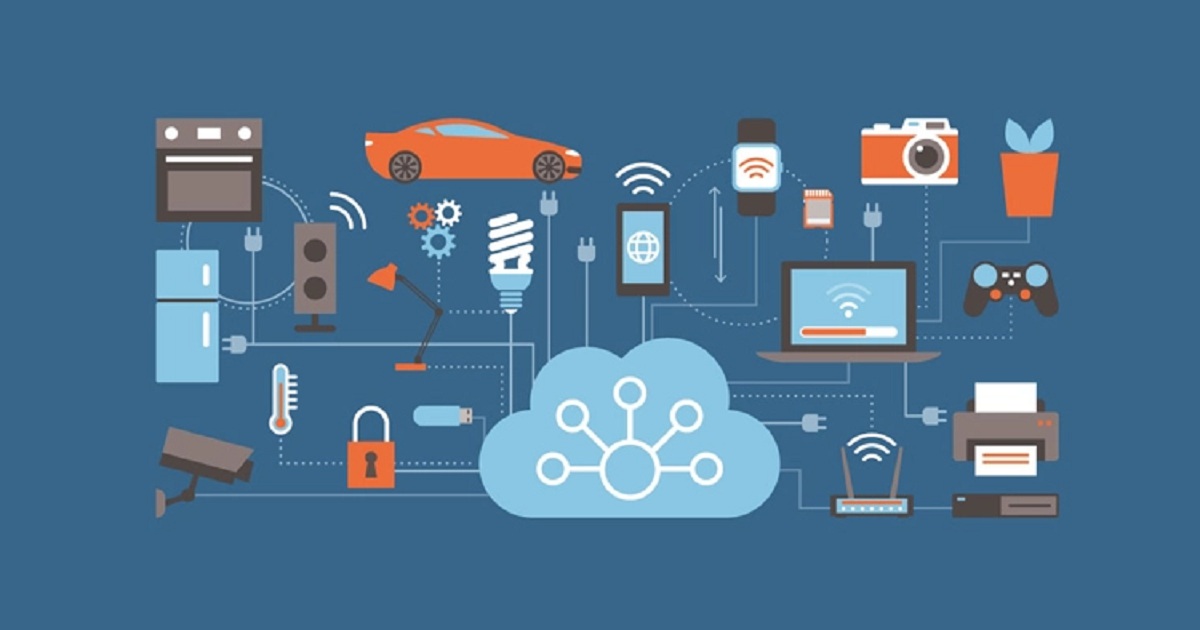
IoT Security
Article | October 11, 2023
Modern computing devices can be thought of as a collection of discrete microprocessors each with a dedicated function like high-speed networking, graphics, Disk I/O, AI, and everything in between. The emergence of the intelligent edge has accelerated the number of these cloud-connected devices that contain multiple specialized sub-processors each with its own firmware layer and often a custom operating system. Many vulnerability analysis and endpoint detection and response (EDR) tools find it challenging to monitor and protect devices at the firmware level, leading to an attractive security gap for attackers to exploit.
At the same time, we have also seen growth in the number of attacks against firmware where sensitive information like credentials and encryption keys are stored in memory. A recent survey commissioned by Microsoft of 1,000 security decision-makers found that 83 percent had experienced some level of firmware security incident, but only 29 percent are allocating resources to protect that critical layer. And according to March 2021 data from the National Vulnerability Database included in a presentation from the Department of Homeland Security’s Cybersecurity and Infrastructure Agency (CISA) at the 2021 RSA, difficult-to-patch firmware attacks are continuing to rise. Microsoft’s Azure Defender for IoT team (formerly CyberX) recently announced alongside the Department of Homeland Security a series of more than 25 critical severity vulnerabilities in IoT and OT devices
Read More

Enterprise Iot
Article | July 20, 2023
Artificial intelligence (AI) has already made headway into becoming a general-purpose technology vastly impacting economies. Yet, the interpretation and estimated trajectory for something remotely close to what we call AI now was first explored in the 1950s.
Until this very day, AI keeps on evolving further. Though let’s face it, AI would have been useless without data. With around 2.5 quintillion bytes of data being generated every day, the numbers will shoot up as the Internet of Things (IoT) enters the game.
Let’s see what this is all about and where and how exactly IoT crosses paths with AI applications.
IoT fundamentals: Where does IoT meet AI
The benefits of IoT in AI
Challenges of IoT in AI
Why implement machine learning in IoT
IoT applications for AI
Key takeaways
IoT fundamentals: Where does IoT meet AI?
What is meant by the term internet of things (IoT) is essentially a system of correlated digital and mechanical appliances, computing devices, and sensors embedded often into everyday objects that transfer data over a network. IoT connects the internet to any and every physical thing or place in the world.
Modern IoT has advanced from the mere merging of microelectromechanical systems to wireless technologies, and faster data transfer through the internet. This resulted in a confluence of information technology and artificial intelligence, allowing unstructured machine-generated data to be evaluated for insights that could lead to new developments.
More and more industries are now referring to IoT to function more proficiently, provide better customer service, escalate the significance of their business, and implement robust decision-making.
Machine learning for IoT can be used to identify anomalies, predict emerging trends, and expand intelligence through the consumption of audio, videos, and images. The implication of machine learning in IoT can substitute manual processes and offer automated systems using statistically backed up actions in critical processes.
The benefits of IoT in AI and real life
IoT offers the following benefits to AI applications:
IoT data for business purposes
Cost and time savings
Task automation and reduction of human intervention
Higher quality of life
IoT data for business purposes
IoT can also be viewed as a data pool. That means by aggregating IoT data, one can extract useful data-driven feedback, which in turn (used properly) may foster effective decision-making. Businesses can also identify new market opportunities, not because of IoT itself but by using the data IoT provides. And since IoT offers companies access to more data, and hence advanced analytics of that data, its usage can eventually result in improved customer outcomes and enhanced service delivery.
Cost and time savings
When devices get connected, cost reductions come along with it. The gathering of different data allows for advances in efficiency, and it leads to money surplus and low-cost materials.
Task automation and reduction of human intervention
Nowadays, devices that are internet-connected can be found in every aspect of our lives, and it is safe to say that they make tasks easier. These automation features range from real-time AI-powered chatbots to home automation control systems, and all of it usually takes a click of a button.
For businesses offering AI-enabled solutions, similar advancements can be achieved with pipeline automation too. That includes significant cuts in annotation and QA time. By leveraging SuperAnnotate’s platform, hundreds of companies recorded faster task completion and more accuracy in prediction results.
Higher quality of life
IoT is not only beneficial in the business aspects but it also creates better living circumstances for us. Smart cities and agriculture, intelligent homes, and food waste solutions are some of the most common ways of IoT providing better, more sustainable living conditions for people.
Challenges of IoT in AI
Despite the numerous benefits and advancements that IoT brings to the table, there have been a few limitations with it. Some of them are listed below:
Privacy issues
Data overflow
Bug issues
Compatibility issues
Privacy issues
With the increased connection between multiple devices or their coexistence for model development purposes, more information is shared between them, which poses vulnerability to your data and makes room for caution. Added layers of protection are needed to prevent risks of data leaks and other threats.
Data overflow
Eventually, organizations will have to find a way to deal with the large numbers of IoT devices, and that will include the collection and systematic management of all the data from those IoT devices. The proper use of data lakes and warehouses, close governance, and intuitive arrangement of datasets will become an utmost priority.
Join hundreds of leading companies who build super high-quality training data up to 5x faster using SuperAnnotate’s intuitive data curation and robust project management features.
Bug issues
If one IoT device has a bug in its system, there is a large chance that every other connected device will also have it.
Compatibility issues
Because there are no international standards of compatibility for IoT, it's harder for different devices to communicate with one another.
Why implement machine learning in IoT
More and more companies are combining IoT with machine learning projects so they can achieve analytical skills on a large variety of use cases which allows their businesses to have access to fresh insights and adopt innovative automation. By implementing machine learning for IoT, they can leverage the following:
Convert data into a coherent format
Arrange the machine learning model on device, edge, and cloud
Enable use of data on edge devices directly for complex decision making
IoT applications for AI
Although we have covered the basics of IoT, its implications for AI are not as simple. Many corporations are adopting IoT which allows them to have an advanced approach to growing and advancing their business. Novel IoT applications are offering organizations the ability to plan and implement more vigorous risk management strategies. Some of the more common uses of IoT in AI encompass the following:
Transport logistics
Not only does IoT expand the material flow systems in transport logistics, but it also improves the automatic identification and global positioning of freight. It also increases energy efficiency and consequently declines the consumption of energy.
Smart cities
Although the term smart city is still incomplete, it mainly refers to an urban area that endorses sustainable enlargement and high quality of life. Giffinger et al.’s model explains the features of a smart city, including the people, the government, the economy, and lifestyle.
E-health control
The two main objectives of future health care are e-health control and prevention. People nowadays can choose to be monitored by physicians even if they do not live in the same country or place. Tracing and monitoring peoples’ health history makes IoT-assisted e-health extremely useful. IoT healthcare solutions could also benefit the specialists, as they can collect information to advance their medical calculations.
Key takeaways
Ever since its development, IoT, especially AI-enabled IoT, as discussed, has been enhancing our daily lives and directing us to work smarter while having complete control over the process. Besides having smart appliances to elevate homes, IoT devices can also be essential for providing insights and an actual look for businesses into their systems. Heading forward, IoT will continue to develop as more organizations get to understand its potential usage and tangible benefits.
Read More

IoT Security
Article | July 5, 2023
Internet of Things, generally known as IoT, is a network of objects or things. Embedded sensors help connect and exchange data with other objects via the internet. IoT is often related to the concept of smart homes, including devices like home security systems, cameras, lighting, refrigerators, etc. With all this data being transmitted over the internet, it is easy for the data to be modified, deleted, or stolen, which can lead to an invasion, theft, etc.
IoT forensics plays a vital role in maintaining the integrity and security of the data being transmitted. Join us as we explore this fascinating web of devices and how you can get started in this vibrant field of forensics.
Read More

IoT Security
Article | October 11, 2023
Building resilient IoT networks: Exploring the top technologies for enhancing IoT security and protecting as well as safeguarding against evolving cyber threats in the interconnected era of Industry 4.0.
Contents
1. What is Network Resilience and Why is it Needed?
1.1 Continuous Operation
1.2 Mitigating Security Threats
1.3 Data Protection
1.4 System Availability
1.5 Risk Management
1.6 Regulatory Compliance
2. Factors to Consider for Network Resilience
3. Top Trends in IoT Security
3.1 Zero Trust and AI
3.2 Supply Chain Security
3.3 Network Segmentation and Segregation
3.4 Over-the-Air (OTA) Updates
3.5 Device Authentication and Authorization
3.6 Software-defined Networking (SDN) Security
3.7 Identity and Access Management (IAM)
4. Conclusion
1. What is Network Resilience and Why is it Needed?
Network resilience refers to the ability of an IoT network to withstand and recover from disruptions, attacks, or failures while maintaining its essential functions. It involves implementing measures to ensure the network remains available, reliable, and secure, even during security threats or unexpected events.
Ensuring network resilience is a critical aspect of IoT network security. Network resilience refers to the ability of an IoT network to withstand and recover from disruptions, attacks, or failures while maintaining its essential functions. Ensuring network resilience in IoT network security is crucial for the following reasons:
1.1 Continuous Operation
IoT networks often support critical applications and services that require uninterrupted operation. Network resilience ensures that these applications can continue functioning even during disruptions, such as network failures or security incidents. It minimizes downtime and ensures business continuity.
1.2 Mitigating Security Threats
IoT networks are susceptible to various cybersecurity threats, including malware, unauthorized access, or Distributed Denial of Service (DDoS) attacks. Network resilience measures help mitigate these threats by implementing security controls, monitoring network traffic, and enabling prompt detection and response to security incidents.
1.3 Data Protection
IoT devices generate and transmit vast amounts of sensitive data. Network resilience safeguards data integrity, confidentiality, and availability by implementing secure communication protocols, encryption mechanisms, and access controls. It ensures that data remains protected even during network disruptions or security breaches.
1.4 System Availability
IoT systems often rely on real-time data processing and communication. Network resilience ensures that data flows seamlessly, allowing IoT devices to exchange information and execute tasks without interruptions. It supports critical functions such as monitoring, control, and decision-making processes.
1.5 Risk Management
Building network resilience helps organizations effectively manage risks associated with IoT deployments. By identifying vulnerabilities, implementing protective measures, and having response plans in place, organizations can minimize the impact of security incidents, reduce financial losses, and maintain the trust of stakeholders.
1.6 Regulatory Compliance
Many industries have specific regulations and standards governing the security and resilience of IoT networks. By ensuring network resilience, organizations can demonstrate compliance with these requirements, avoiding penalties, legal issues, and reputational damage.
2. Factors to Consider for Network Resilience
Implementing redundancy and failover mechanisms within the network infrastructure helps mitigate the impact of single points of failure. This involves deploying backup systems, redundant network paths, and failover mechanisms to ensure continuous operation despite a failure or attack. Traffic Monitoring and Anomaly Detection for Continuous network traffic monitoring helps identify abnormal patterns or behaviours that may indicate security threats or attacks. By leveraging intrusion detection and prevention systems (IDPS) and traffic analysis tools, organizations can promptly detect and respond to network anomalies, safeguarding network resilience. Moreover, segmentation and Isolation: Dividing the IoT network into segments or zones and isolating critical devices or systems from less secure ones enhances network resilience. Implementing proper network segmentation, VLANs (Virtual Local Area Networks), or software-defined networking (SDN) enables effective control, containment, and mitigation of security incidents.
DDoS attacks significantly threaten network resilience by overwhelming the network's resources and causing service disruption. Deploying robust DDoS protection measures, such as traffic filtering, rate limiting, and traffic diversion, helps mitigate the impact of such attacks and ensures network availability. Incident Response and Establishing comprehensive incident response and recovery plans specific to IoT network security incidents is crucial. These plans should outline clear procedures, roles, and responsibilities to efficiently respond to and recover from security breaches or disruptions, minimizing downtime and maintaining network resilience. In addition, regular penetration testing, vulnerability assessments, and network audits help identify weaknesses and vulnerabilities in the IoT network infrastructure. Promptly addressing these issues through patches, updates, and security configuration adjustments strengthens network resilience by proactively addressing potential security risks.
By implementing these measures, organizations can enhance the resilience of their IoT networks, ensuring continuous operation, prompt threat detection, and effective response to security incidents. Network resilience plays a vital role in maintaining IoT systems' integrity, availability, and reliability in the face of evolving security challenges.
3. Top Trends in IoT Security
3.1 Zero Trust and AI
Zero Trust is an emerging security concept that assumes no implicit trust towards devices or users, even if they are already inside the network perimeter. Implementing Zero Trust principles in IoT networks can help mitigate the risks associated with compromised devices and unauthorized access for IoT security. In order to bolster cybersecurity measures, adopting a zero trust approach. Effectively addressing cybersecurity challenges entails not merely technological solutions but a comprehensive organizational strategy rooted in cultural and policy frameworks. Emphasizing the zero trust concept underscores the importance of policy implementation throughout the entire organization, complementing technological measures.
3.2 Supply Chain Security
The complex and interconnected nature of IoT supply chains introduces security risks. The supply chain for IoT devices involves multiple stages, including device manufacturing, software development, distribution, and deployment. Each stage presents potential security risks that can compromise the integrity and security of the IoT network. This includes adopting secure supply chain management practices, such as verifying the security practices of suppliers and manufacturers, and establishing clear security requirements and standards for the entire supply chain. Conducting third-party risk assessments helps evaluate the security posture of suppliers and vendors to identify any potential vulnerabilities or weaknesses.
3.3 Network Segmentation and Segregation
In IoT security, minimizing the potential impact of a compromised IoT device is crucial, and network segmentation and segregation play a vital role in achieving this goal. Network segmentation involves dividing the network into separate zones or segments, based on factors such as device type, functionality, or security requirements. The containment strategy helps minimize the impact of a security breach by isolating compromised devices and preventing lateral movement within the network.
3.4 Over-the-Air (OTA) Updates
Software updates play a critical role in maintaining the integrity and security of IoT devices. IoT devices frequently require updates to address software bugs, patch vulnerabilities, or introduce new features. Over-the-Air (OTA) update mechanisms are being enhanced with robust security measures to ensure the secure delivery and installation of updates. Code signing is a prevalent practice where updates are digitally signed with cryptographic keys to verify the authenticity and integrity of the software. Secure boot is another important mechanism that establishes a chain of trust during the device boot-up process, ensuring that only authorized and tamper-free software is loaded onto the device.
3.5 Device Authentication and Authorization
The increasing number of IoT devices poses a significant challenge in ensuring secure and trusted authentication and authorization. Two-factor authentication (2FA), for example, adds an extra layer of protection by requiring users or devices to provide two separate forms of authentication, such as a password and a unique code sent to a mobile device. Digital certificates, on the other hand, enable secure and trusted device authentication by leveraging public key infrastructure (PKI) technology. Each IoT device is issued a unique digital certificate, which serves as a digital identity, allowing for secure communication and verification of device authenticity.
3.6 Software-defined Networking (SDN) Security
Securing Software-defined Networking (SDN) environments is paramount to protect IoT deployments. SDN offers centralized control and management of network resources, providing flexibility and scalability. This ensures that only authorized entities can access and make changes to the SDN infrastructure, preventing unauthorized access and configuration changes. Additionally, continuous traffic monitoring and analysis enable the detection of suspicious activities and potential security breaches. Encryption IoT standards and protocols should be employed to secure communication between the SDN controller, switches, and IoT devices, safeguarding data privacy and integrity. Network segmentation within the SDN environment helps limit the impact of security breaches, reducing the attack surface.
3.7 Identity and Access Management (IAM)
Implementing IAM solutions, such as role-based access control (RBAC) and multi-factor authentication (MFA), within IoT networks significantly enhances network security. IAM ensures that only authorized individuals can access and interact with IoT devices and systems. RBAC enables administrators to assign specific access privileges based on user roles and responsibilities, reducing the risk of unauthorized access. Additionally, incorporating MFA adds an extra layer of security by requiring users to provide multiple forms of authentication, such as a password and a unique token or biometric verification. This significantly reduces the risk of unauthorized access even if a user's credentials are compromised.
4. Conclusion
The technologies discussed in this article play a crucial role in enhancing IoT network security and resilience. By leveraging these technologies, organizations can mitigate the risks associated with IoT deployments, protect against cyber threats, and ensure the reliability and continuity of their IoT networks. As the IoT landscape evolves, staying up-to-date with these top technologies will be essential for organizations to maintain a robust and secure IoT infrastructure.
The transformative landscape of Industry 4.0 demands strong network security in IoT environments. The top technologies discussed in this article empower organizations to enhance network resilience, protect against cyber threats, and ensure the uninterrupted functioning of IoT networks. Embracing these technologies and staying ahead of emerging threats, helps organizations build a secure foundation for their IoT deployments and capitalize on the vast opportunities offered by the IoT ecosystem.
Read More